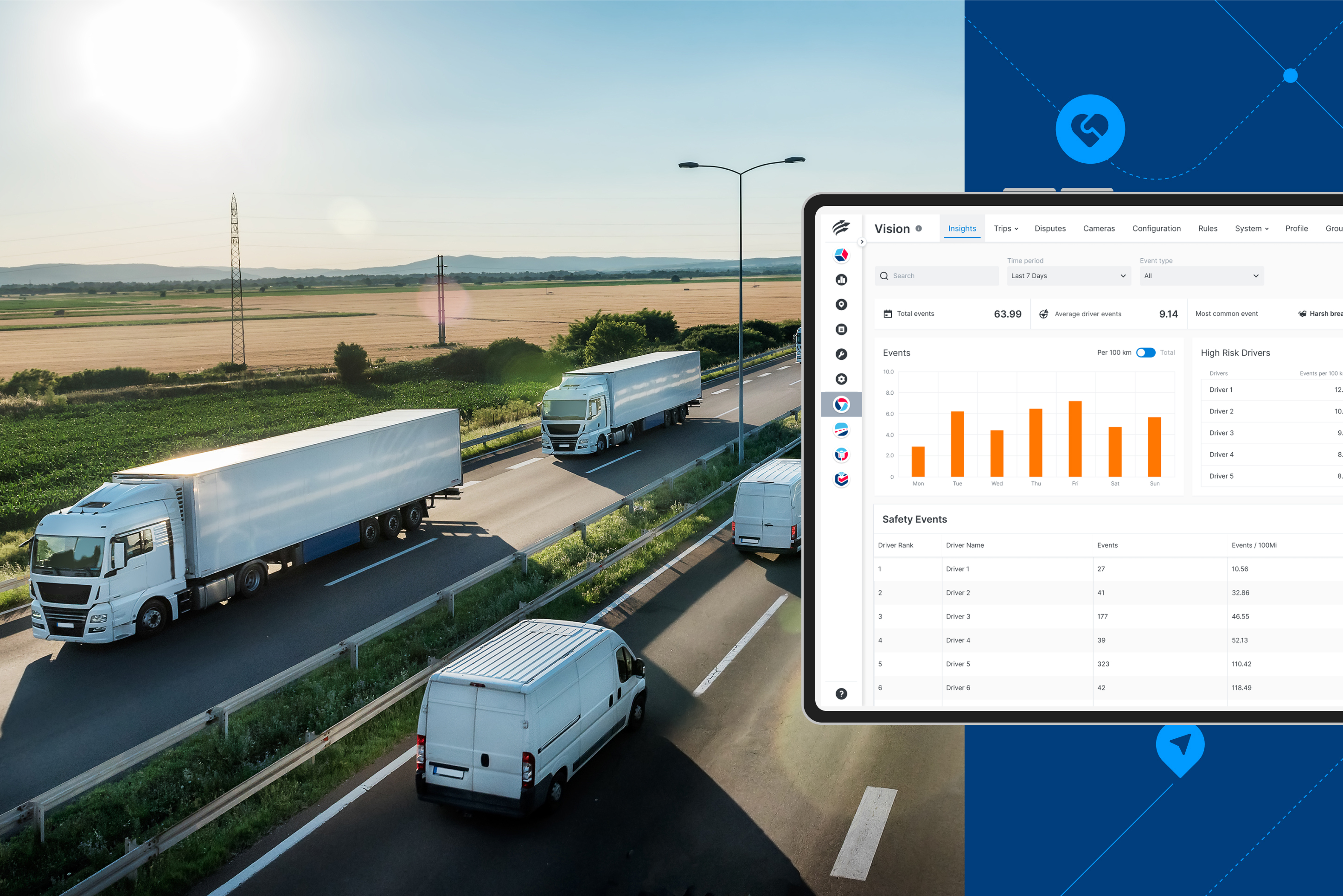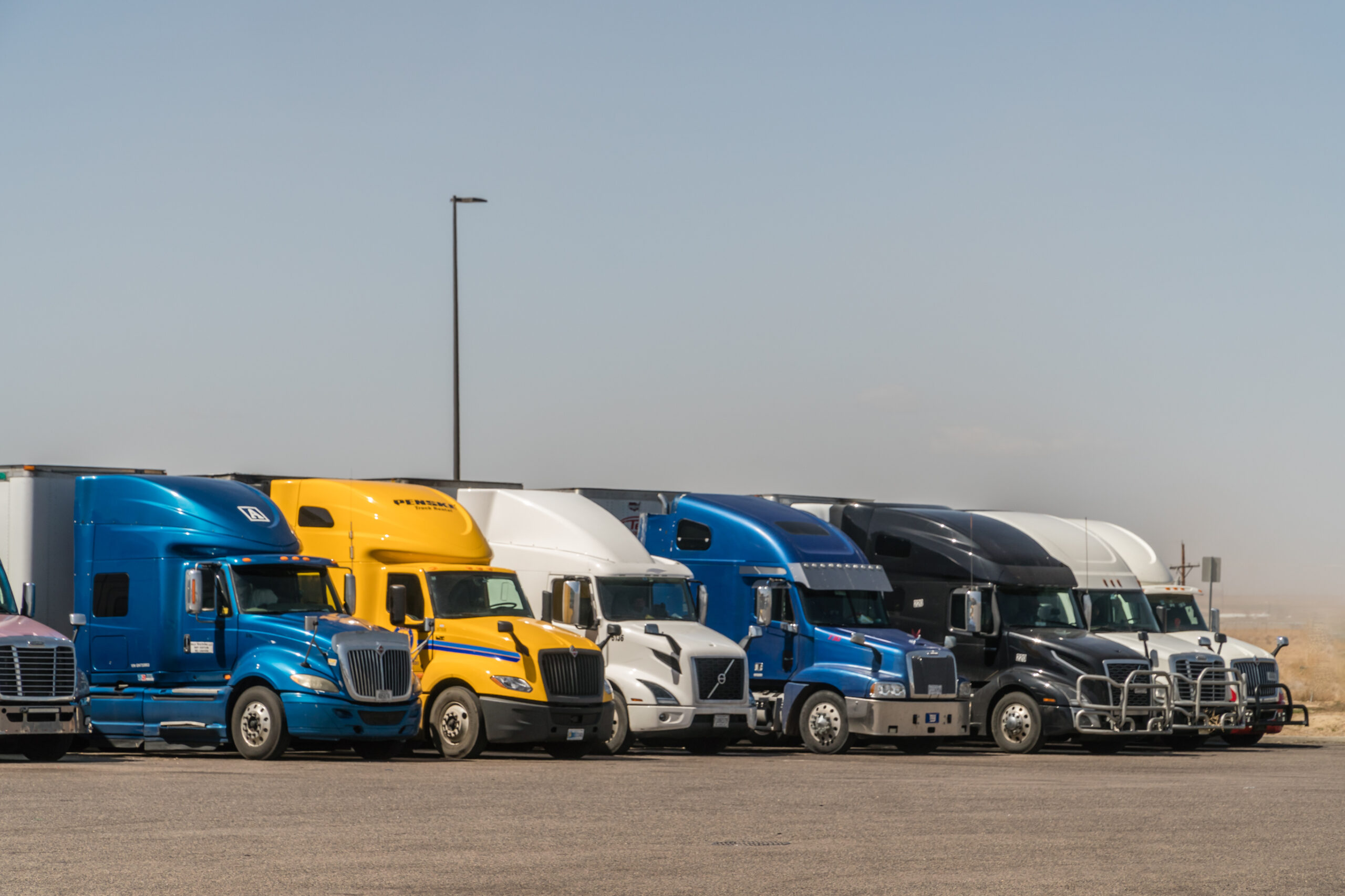Managing snow removal operations can be as unpredictable as the next sudden snowstorm. Snow removal fleets not only need to ensure they are up to the task, but they also need to manage operations while adapting to unpredictable and challenging road conditions.
Moreover, according to the U.S. DOT – Federal Highway Administration, 24% of weather-related accidents happen annually due to hazardous road conditions from snow, ice, and slush. Public safety is a priority and snow removal fleets need to act fast when the snow flies.
The unpredictable strain on fleets can negatively impact your operations, especially your budget. Heavy and ongoing bad weather conditions often mean an increase in costs associated with using extra supplies, equipment, and increased manpower.
Some of the biggest challenges facing fleets:
- Optimizing plowing routes
- Ensuring equipment is well-maintained and available
- Keeping unsafe driving behaviors to a minimum
- Being prepared to respond in an emergency
Efficiency, effective communication, and impeccable route planning are key in getting the job done quickly and safely, maintaining a good reputation, and turning a healthy profit.
Managers need to be proactive and prepare well before winter hits, so they’re ready to perform flawlessly 24/7, for weeks—or even months—on end.
Fleet management software can be a big help in meeting these challenges. Rather than relying on guesswork, manual processes, and limited weather updates, telematics improves efficiency through better visibility into routes taken, improved communication capabilities, and increased transparency across the entire fleet—among other things. Read on to discover how telematics can benefit your snow removal operations.
1. Be Prepared: Pre-Season Is Critical
Being a fleet manager is like spinning plates: there are multiple operations all happening at once—and if one plate drops, it has the potential to have a serious knock-on effect.
So, before the snow season kicks off, make sure your fleet is prepared. Create a pre-season checklist if you don’t already have one. If you already have one, now’s the time to update it.
The checklist should include your full team’s input and cover everything from parts and resource stocks to routes and inspection plans.
Once it’s complete, it’s time to review it: replace filters and belts, lubricate moving parts, check oil levels, etc.
Leave nothing to chance.
It’s also a good idea to scan items into your fleet management system and assign them asset numbers and a preventative maintenance schedule. This makes it easier to monitor stocks and parts and stay on top of maintenance checks, both as the season progresses, and the following year.
Fleet managers can also minimize vehicle downtime and expensive repairs by taking advantage of the maintenance scheduling features in Powerfleet’s (formerly Fleet Complete) management system. This allows you to better set, edit, and deliver servicing across their fleet to ensure all of your bases are covered and vehicles are in tip-top condition.
Your checklist should be revisited and updated yearly before the season begins. This helps you prepare and identify recurring problems to take preventative steps now and in the future.
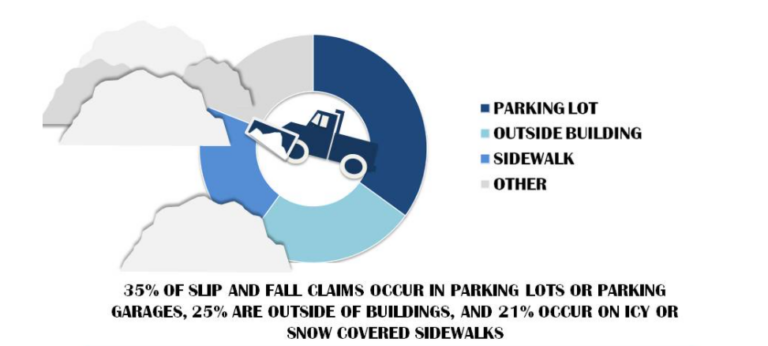
Snow removal isn’t just about keeping roads clear. Public safety is a priority (Image Source).
2. Plan the Most Efficient Routes Possible
Covering a lot of ground? Got multi-leg routes?
For large municipalities and fleets with a lot of vehicles, keeping on top of everything can be a challenge.
Using telematics software can help streamline, automate, and speed up your operations on a variety of fronts. You get a centralized view of all your vehicles in real-time and can easily reroute your drivers when needed.
You can assign work by geographical zones and regions that are specific to drivers and routes. Most importantly, you can improve your response time.

Powerfleet (formerly Fleet Complete) dashboard showing point of interest using a ‘Geofence’ feature
If there’s a disruption, a vehicle breakdown, or your driver gets lost, you get real-time data on a web map, from where the fleet manager can direct the driver through the next steps or send out a replacement.
3. Monitor & Optimize Stock Levels
Unpredictable weather conditions mean fleet managers need to ensure vehicles are fully equipped and ready to go and know exactly where their vehicles are at all times.
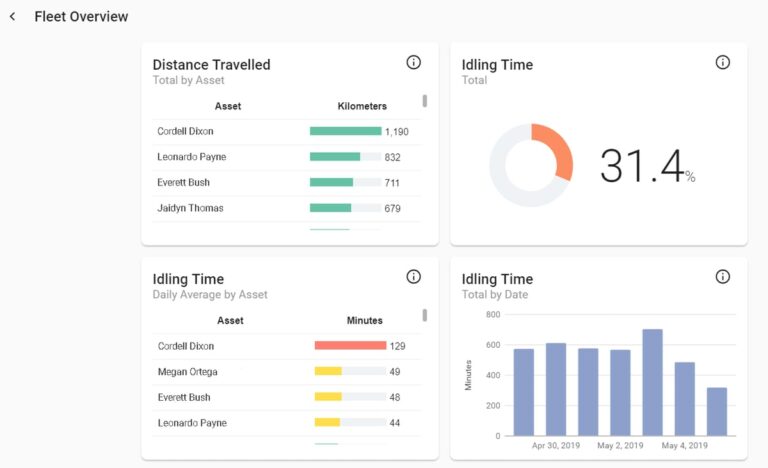
Powerfleet (formerly Fleet Complete) Dashboard
Snow operations are stock and fuel-intensive. In fact, according to fueleconomy.gov, winter driving conditions can massively reduce fuel economy:
Fuel economy tests show that, in city driving, a conventional gasoline car's gas mileage is roughly 15% lower at 20°F than it would be at 77°F. It can drop as much as 24% for short (3- to 4-mile) trips.
Fleet management software can help you better control fuel usage. If there’s a storm, fuel usage will increase and fuel stocks may run low or be delayed. Being proactive about this means you’ll be better prepared.
The same goes for supplies: send a vehicle out without the necessary sand and salt stocks and that’s a wasted journey—it will have to be redone, resulting in lost time for both the driver and vehicle.
Fleet telematics can help managers conduct a series of checks and balances with certain notifications and a mobile app, called Task Tracker, for an easy and convenient way to ensure the drivers are well equipped for the day ahead. You can also track metrics to get a bird’s eye view of how much stock you’re using over time.
4. Prioritize Transparency & Communication
Good communication is crucial, especially during the height of the snow season.
Real-time data makes it easier to be transparent: stats can help fleet managers talk to their drivers about their use of resources, driving speed, and safety concerns.
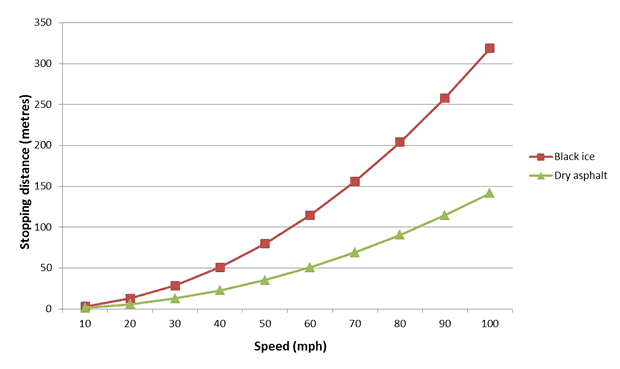
Stopping distances rise significantly when a vehicle breaks on black ice vs. asphalt (Image Source).
Taking a proactive approach to sharing information means that if there’s a delay or sudden bad weather, both drivers and residents can be kept in the loop, easing worries, and allowing everyone involved to effectively plan and stay safe.
Well-executed preparation and emergency readiness are vital for snow removal operations. Fleet telematics can help you run preventative maintenance checks, monitor stock levels, and track vehicles in real-time.
To see how Powerfleet’s (formerly Fleet Complete) customizable, robust solution can benefit your snow removal fleet, request our Powerfleet (formerly Fleet Complete) demo today or contact us for more info.















